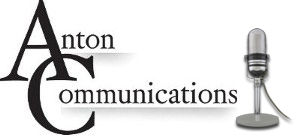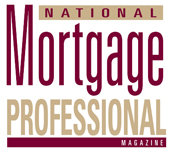Building a Social Media Fan Base from Scratch
By Genevieve Anton
The mere act of putting up a social media site does not guarantee traffic. You can create a killer business page on Facebook, post every day and even get some comments – only to find that after months of effort, fewer than 50 people “like” your site, which has yet to drive any measurable new business.
What we stress to our clients is that it is important to build a strong base of followers as quickly as possible, incentivize them to get more people involved and actively engage with them long term.
Remember, most people are not typing in “30 year fixed mortgage rates” on Facebook or using the hashtag #homeloan when they tweet. With social media you are investing in awareness, much like real estate agents blanket a community with door tags, special events, direct mail and other promotional methods. Now, here are 10 proactive strategies to build your fan base from scratch.
- Keep it fresh, relevant, authentic and relatively non-promotional.
The biggest mistake made by mortgage professionals who delve into social media is lack of a content strategy. The solution is a marketing calendar, a spreadsheet with your social media networks and what kind of content you plan to post for the week or month.
The industry rule of thumb is 80 percent of content should provide value for your followers and 20 percent can be self-promotional. So, what can you post when you’re not talking about your business?
- Industry tips, information or advice (add your own commentary)
- Photos, videos and links to sites that support your message
- Questions to engage your fans; responses to start a dialogue
- Photo profiles your offices or employees (with permission)
- An occasional (tasteful and non-offensive) joke, funny story or quote
Be very careful in giving financial advice or specific rates online. Even though it’s on social media, your content still must conform to mortgage industry compliance regulations.
- Invite your existing business connections to join your social networks.
A mortgage professional’s contact list should be the first tool used to attract followers. An email blast announcing your business is on Facebook, Twitter, LinkedIn, Google Plus, etc. with hyperlinks to those accounts, is a good way to start. Try to offer some incentive to connect.
For example, to encourage Facebook “likes” by the 200+ employees of our client Bay Equity (www.bayeq.com), a mortgage lending institution based in San Francisco, we conducted a “BE All In!” contest. Employees could enter their email and the words “I’m all in!” once every 24 hours to increase their chances of winning a $100 gas card for their summer drive vacation – which kept them coming back for three weeks straight!
Next we plan a referral contest to encourage fans to reach out to clients, friends, family and colleagues to support Bay Equity and help create engagement on their social media platforms.
- Integrate social networks with all your marketing efforts
If you just paid to have a business logo designed, one of the first things you would do is slap it on your business card, website and email signature. The same strategy should apply to your social media icons – make it as easy as possible for people to find you in the social sphere. If you really want to show your tech savvy, print business cards with a QR code on the back that takes people to your Facebook page!
- Leverage existing social networks
If you already have a strong following on LinkedIn, use it to promote your Twitter stream or Facebook page. Do this repeatedly – though not annoyingly – and give people a reason to check out your other platforms. A similar strategy can work for online forums or membership sites. If you are an active participant, use a signature with your social media links. Stand out from the crowd by posting frequent tips or comments, and they’ll be more likely to follow you elsewhere.
- Develop Relationships with Similar Businesses
If you develop relationships with similar businesses on Facebook, they may provide information and useful links, or even refer people to your business and help promote it.
A mortgage professional might not want to “friend” the competition, but what about local real estate agents or brokers? Any business involved in home-building could prove a lucrative connection: home builders, architects, interior designers, title companies or wholesale mortgage lenders.
How do you find these companies? We did this for Trumark Homes (www.trumark-co.com) by mining the fan bases of similar companies, vendors and business partners, as well as trade publications. After you connect with all of those networks – and interacted with them over time – your industry contacts, along with their fan bases, will grow exponentially!
- Pay it forward with the 3 R’s: Recognition, referrals and recommendations.
Listen and engage with your followers. Like, share or comment on their posts in a meaningful way. If someone you know “likes” your page, thank them personally. It’s good to show appreciation and it will reflect positively on your reputation.
If you haven’t already, gather testimonials from your existing customers. The best kinds are short video recommendations that can be shot with a smartphone and posted directly to your page, but written testimonials also are powerful. Share them across all channels.
Here’s another tip: Instead of asking for recommendations or referrals, give them freely to business contacts who are most likely to reciprocate.
- Use Tags (Sparingly) in Your Posts
One of the most popular features on Facebook is tagging, which allows you to reference people, pages or places in status updates and other posts. Friends you tag get a notification and a post, which might prompt them to visit your profile to see what they were tagged in and perhaps leave a comment. This will help to increase your Edge Rank status and make it more likely you will show up in your fans’ news feeds.
Take the case of our client, Wood Partners (www.woodpartners.com), a multifamily developer with active communities across the country. By using tags, shares, likes and comments through the corporate social media platforms, we help make their properties more visible and build search engine ranking.
Note that businesses cannot tag people, only other businesses. Also, if a business has set their page up as a personal profile page, you won’t be able to tag them.
- Don’t be shy. Ask for Likes and Shares.
To encourage engagement, which is critical to a healthy social network, don’t post passive comments that simply state your opinion or share a bit of news. Ask your followers to respond or share their thoughts. There’s nothing wrong with ending a post by saying “Click ‘like’ if you agree” or “Please help spread the news by clicking on the ‘Share” button right next to this message”. Posing a related question also tends to solicit comments.
- Sponsor a Facebook campaign
While following these tips will result in an initial surge of fans and followers, the growth may eventually flatten. You’ll need a way to discover people who have little or no degree of connection with you or your business. How to do that?
One of the best ways to attract new fans is a contest on Twitter or Facebook. There is an endless variety of campaigns from which to choose including sweepstakes, treasure hunts, and photo or video contests. The three basis rules we stress are 1) Keep it simple; 2) Provide an incentive; and 3) Include a required Facebook or Twitter interaction such as “like”, a “follow” or an online vote.
To jumpstart a new Facebook fan page by Brandywine Homes (www.brandywine-homes.com),
- our firm created a month-long online sweepstakes that resulted in almost 1,200 new “likes” for the SoCal homebuilder. Best of all, most of these fans were local because we intentionally offered a prize that appealed only to people who lived nearby – two VIP tickets to the Taste of Orange County!
- What About Facebook Ads and Sponsored Stories?
There are many different opinions of the effectiveness of Facebook ads, but a new strategy called Sponsored Stories apparently has back-fired badly. This service allowed businesses to create an ad using the name and photo of anyone who “liked” them with being informed or compensated. Facebook recently paid $20 million to settle a class-action lawsuit against this practice and now must allow users to opt-out of Sponsored Stories.
Facebook ads, on the other hand, have been around for years. The ability to target ads to people based on very specific criteria and cap your ad spend at a daily amount of your choosing makes for a very cost-effective way to reach consumers, especially for smaller businesses.
The beauty of social media is that it doesn’t take much money to be successful, but it does take time and we are all busy professionals. It helps to remember that social networks are just another way of building relationships with real people, and just as important to your business as connecting face-to-face. If properly nurtured, these relationships will yield a long-term payoff both online and in the real world.
About the Author:
Genevieve Anton is the principal of Anton Communications Inc., a seasoned public relations professional and a veteran journalist with more than 30 years of experience. Her specialties are residential and commercial real estate development, finance, hospitality, property management and government affairs. Prior to her career in public relations, Genevieve was a professional journalist for 20 years as a television producer and writer for Cable News Network (CNN) and the ABC affiliate in Denver, as well as an editor and reporter for several daily newspapers nationwide. Genevieve earned her bachelor’s degree in public policy and communications at Duke University. She has conceived, coordinated and moderated panels for dozens of industry conferences, including PCBC, ULI meetings, IMN Forum on Real Estate Opportunity & Private Fund Investing, the International Building Industry Show, MFE Multifamily Trends, Crittenden Real Estate Finance Conference, Apartment Finance Trends and Building Industry Association events.



